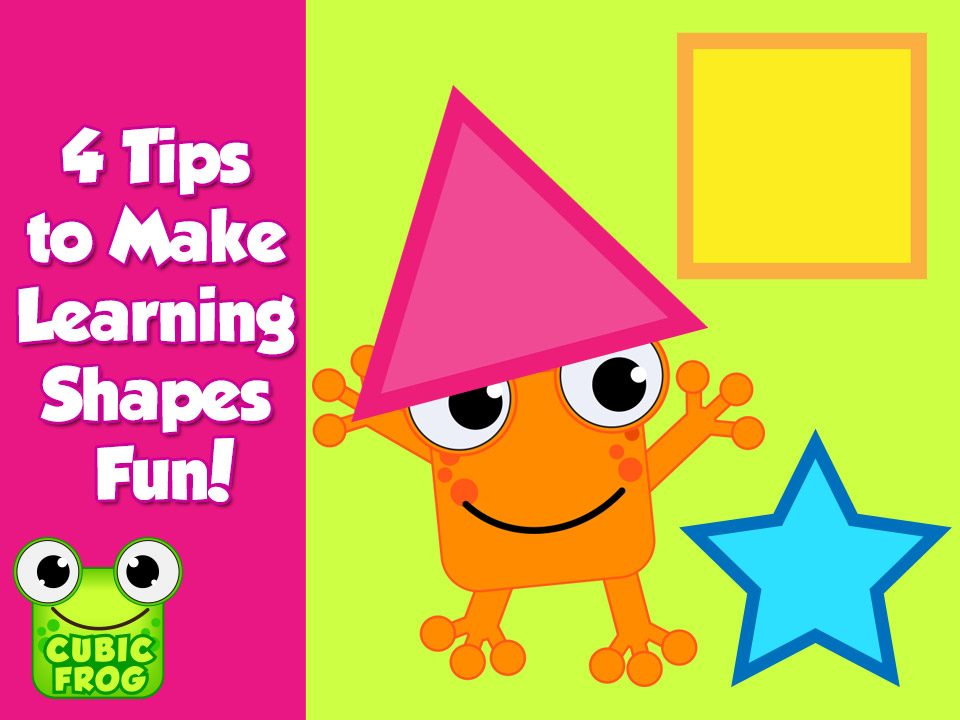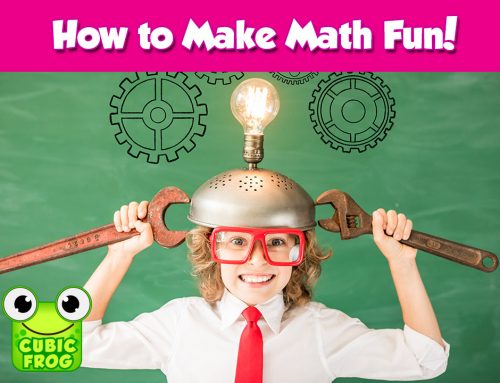Learning shapes is one of the first fundamental skills in early math. Teaching shapes to kids are essential not only geometrically, but cognitively in the brain’s ability to recognize anything from your face (which is made up of shapes!) to the hexagon on a stop sign.
Shapes are such a key part of navigating and understanding our world, by helping kids decipher and put a name to these shapes, we are assisting in this comprehension of their surroundings.
Here at Cubic Frog®, we believe when learning any concept, it’s important and most effective to include all the senses in learning. When teaching shapes to kids, it’s important little ones see shapes on a wide color scale, in 2D and 3D, hear the names of shapes, touch shapes in the form of blocks and everyday objects, begin tracing shapes, smell and taste shapes in all the food we eat and cook together.
1. Recognize
Recognizing shapes is the very core of learning. In every moment we are literally surrounded by every and all shapes, meaning endless teaching opportunities and it’s never too soon to start. Begin by simply pointing out the shapes of every day. The clock is a circle, the table is a square. Trace the objects with your finger and repeat the shape, have your little one follow along. Don’t worry if they’re not repeating at first, trust us, they’re listening. It takes lots and lots of repetition for the brain to learn something.
Go on a shape safari! Pick a shape-of-the-day and keep track of how many of those shapes you can spot. Or, go to a park or museum and find as many different shapes as you can.
2. Silhouettes and Shadows
Now that we know our shape names, it’s important we cognitively connect them with their outer shape. This helps the brain establish a memory of a shape, so even when the object is not there, we know what it looks like. Start out by simply observing the shadows different objects make (hello shadow puppet theater!). Using different puzzles is also a great way to develop spatial-shape awareness. And, make sure you let your little one make mistakes, see which pieces fit and don’t fit, it’s a very important part of the learning process.
3. Trace
Tracing phase is a long and always ongoing phase. As suggested above, tracing can start by simply tracing your finger in the air around an object and using your finger to trace the shapes of objects. Then try a salt or sand tracing box, move to tracing worksheets and apps that help kids trace around a shape. What’s important is to connect the tactile fine motor skills of writing and tracing with the shape itself. And like anything, this requires practice, practice, practice.
4. Draw
Ok, so you’re ready for the big leagues. Let’s get to drawing shapes slowly and in all different ways. Because this part can sometimes be frustrating we recommend getting to drawing shapes slowly. You draw two sides of a square and have your little one do the other two. Use things like toothpicks and string to construct shapes, or leave a few sides/parts open to being finished. It’s important to present tasks that are on your kids level, so they can complete them with a sense of accomplishment. Rulers are an important tool here for assisting in making straight lines.
Now we’ve got the combined task of knowing which shape is which and building essential fine motor skills in hands and handwriting. This is a big deal! So remember, be patient and make it fun, and if kids get stuck, go back and use your other 3 steps.
Free, Helpful Resources:
Cubic Frog® is proud of our mobile math games that utilize bright colors, sound and touch commands, and most importantly, FUN to teach shapes.
You can download our games for FREE on iTunes App Store, Google Play Store, Amazon Kindle, Opera, and NOOK® by Barnes & Noble.
Try:
Preschool EduMath 2 a game devoted to teaching shapes, including a shape tracing game.
Preschool EduPaint is a colorful activity workbook which includes shapes and shape recognition.






